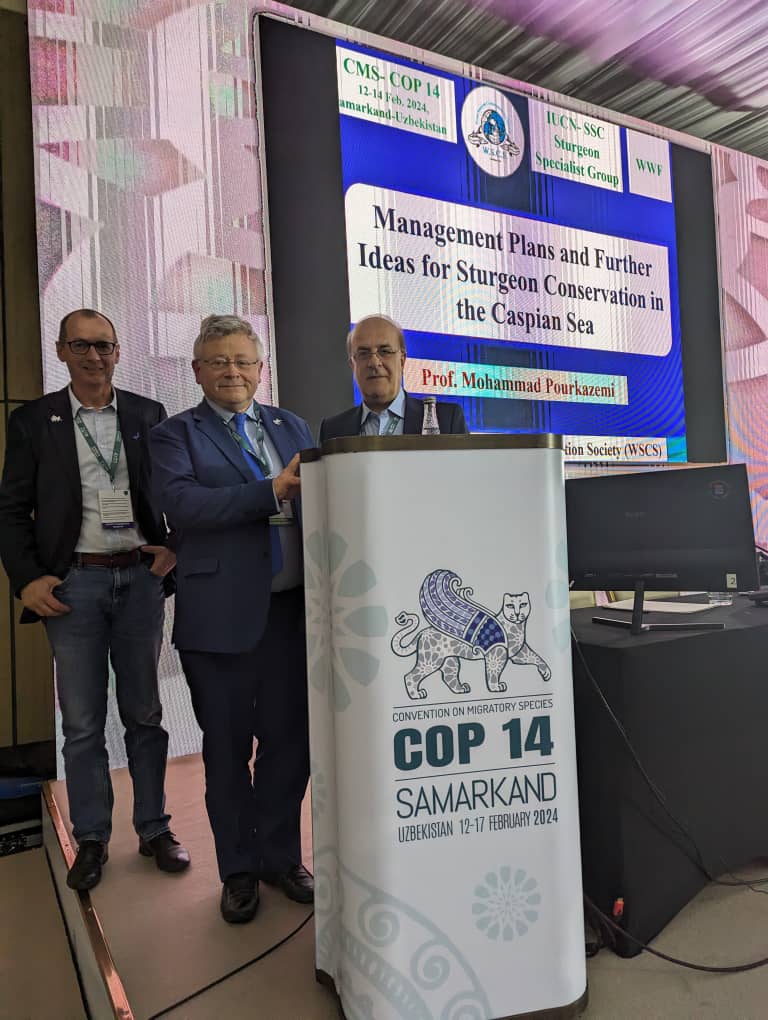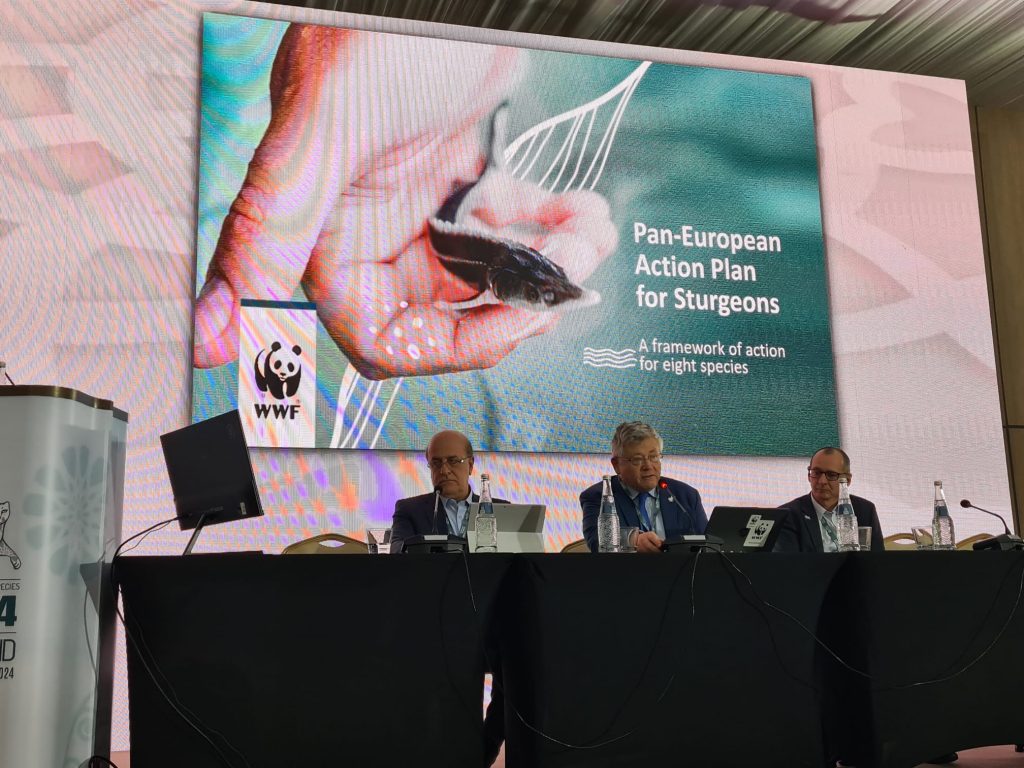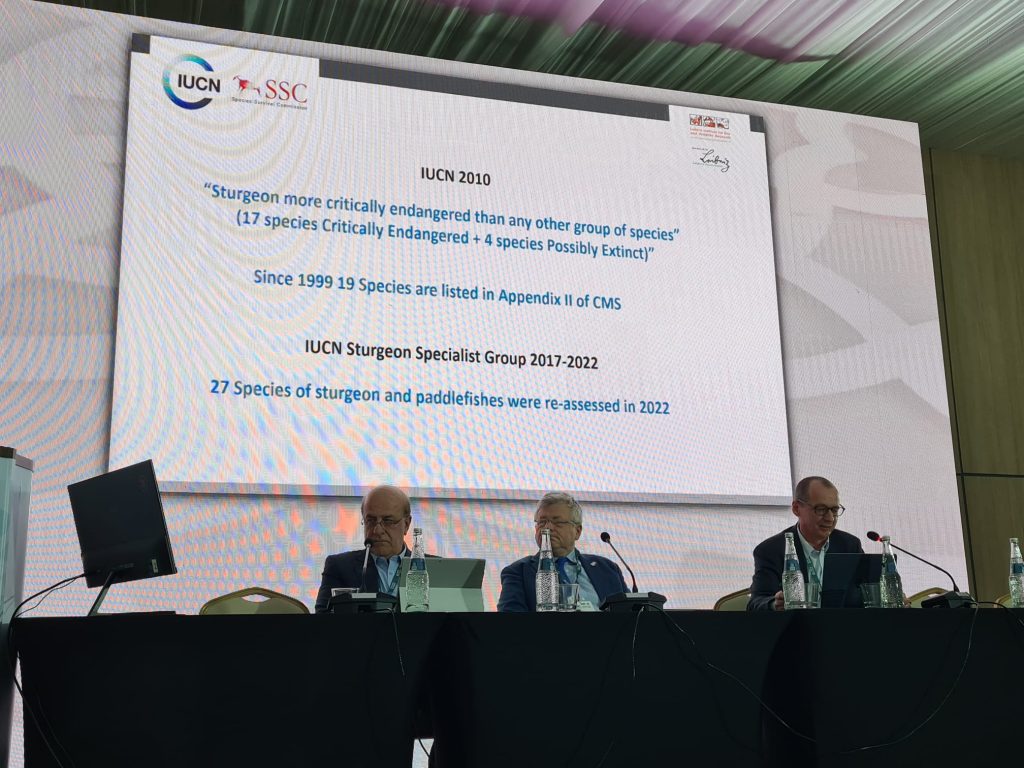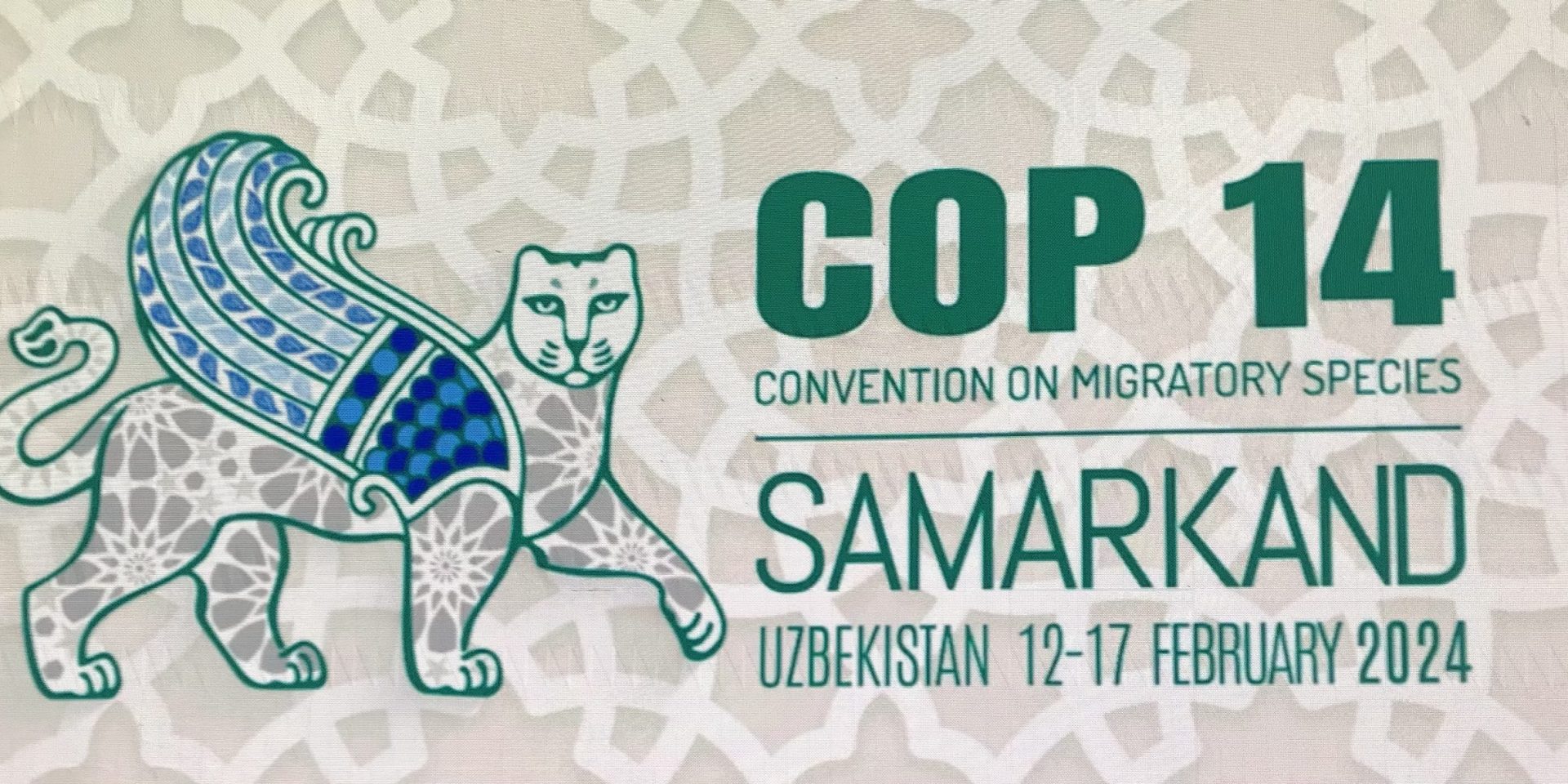Joint effort for development of a Sturgeon Action Plan for the Caspian Sea
Concurrently with the 14th meeting of the Convention on Migratory Species (CMS-COP14), held from February 12-17, 2024, in Samarkand, Uzbekistan, side events were conducted by the representatives of the IUCN Sturgeon Specialist Group, WSCS, and WWF on February 15th in the Tashkent Room. The following is a summary of this meeting:
Dr. Colman O Criodain, Head of Policy in the Wildlife Practice at WWF International, presided over the meeting and succinctly underscored the global significance of sturgeon conservation. He emphasized the substantial efforts invested over the past two decades in diverse international forums, including CITES. Regrettably, despite these endeavors, a decline persists in the natural resources of numerous valuable sturgeon species worldwide. The meeting, attended by international experts, was organized to underscore the critical importance and urgency of formulating an action plan for the conservation of Caspian Sea sturgeon.
Prof. Mohammad Pourkazemi, the representative of WSCS, delivered a presentation titled “Management Plans and Further Strategies for Sturgeon Conservation in the Caspian Sea.” The presentation addressed the alarming stock status of six sturgeon species in the Caspian Sea and its basin. Prof. Pourkazemi highlighted the critical condition of certain sturgeon species, particularly Beluga, Ship, and Stellate sturgeons, with a staggering 99% decline in their natural stocks. In some years, only 2-3 specimens are captured, raising serious concerns about the imminent risk of extinction for these valuable species.
Despite the voluntary ban on the commercial fishing and export of five Caspian sturgeon species by the littoral states, illegal fishing and other threats persist, contributing to the ongoing depletion of sturgeon stocks. Prof. Pourkazemi expressed disappointment in the lack of improvement in sturgeon stocks despite the existence of the Aquatic Living Resources Commission of the Caspian Sea and its 31 years of experience, including 37 joint meetings. The absence of a serious consideration for an action plan on sturgeon management was noted.
Additionally, Prof. Pourkazemi highlighted the valuable efforts of WSCS in contributing to the development of the Ramsar (2005) and Vienna (2018) declarations on Global Sturgeon Conservation, and that WSCS is prepared to collaborate and leverage its extensive expertise and knowledge from its international members and experts to develop an action plan for the conservation of Caspian Sea sturgeon.
Dr. Colman O Criodain, the WWF representative, presented the “Pan-European Action Plan for Sturgeons.” He introduced Europe’s endangered sturgeon species and provided examples of sturgeon recovery measures in the region. Dr. O Criodain emphasized the presence of an Action Plan across seven geographical regions, covering various water bodies in Europe. Additionally, he outlined the challenges associated with implementing these action plans and addressed the legal status of such plans adopted by different regional institutions like the Bern Convention and the Baltic Marine Environment Protection Commission. Dr. O Criodain also highlighted the five-year implementation of the EU-funded support in emerging and executing the plan.
Prof. Arne Ludwig, Chair of the IUCN/Sturgeon Specialist Group, delivered a presentation on “The Situation of Sturgeon and Paddlefish.” He underscored the critical endangerment of sturgeons, noting that they are more at risk than any other group of species, with 17 species classified as critically endangered and four species possibly extinct.
Prof. Ludwig shared insights from a market survey conducted along the Danube River, which involved collecting 149 samples from Ukraine, Romania, Bulgaria, and Serbia using isotope genetic studies. The results revealed that 31 samples originated from the wild, while 17 were being sold in violation of CITES regulations. Additionally, there were 47 instances of consumer deception, indicating an ongoing issue of poaching in the region.
Two positive developments were reported, with the rediscovery of the Shovelnose sturgeon in the Amu Darya River, Uzbekistan, and the Ship Sturgeon in the Rioni River, Georgia. Additionally, there was encouraging news of natural reproduction of the Adriatic Sturgeon in 2021.
The speaker highlighted key issues that need attention in the sturgeon action plan for the Caspian Sea, including the coordination of release and management programs, a united effort against poaching, public education, and coordinated actions against organized crime. In conclusion, the IUCN SSG expressed its commitment to providing technical and scientific support for the development of the Caspian Sea Action Plan.
Conclusions:
Over the past two decades, this event marks the inaugural official assembly of the international community, comprising IUCN, WSCS, and WWF, with a specific emphasis on the development of sturgeon conservation in the Caspian Sea. These initial steps necessitate the prompt drafting of an action plan in collaboration with experts from the respective regions and sturgeon range states. The subsequent phases involve communicating and officially presenting the finalized draft of the Action Plan to the Fisheries organization of the Caspian range states, as well as pertinent conventions. This progression is crucial for the immediate mobilization of such high-priority conservation issues
.







